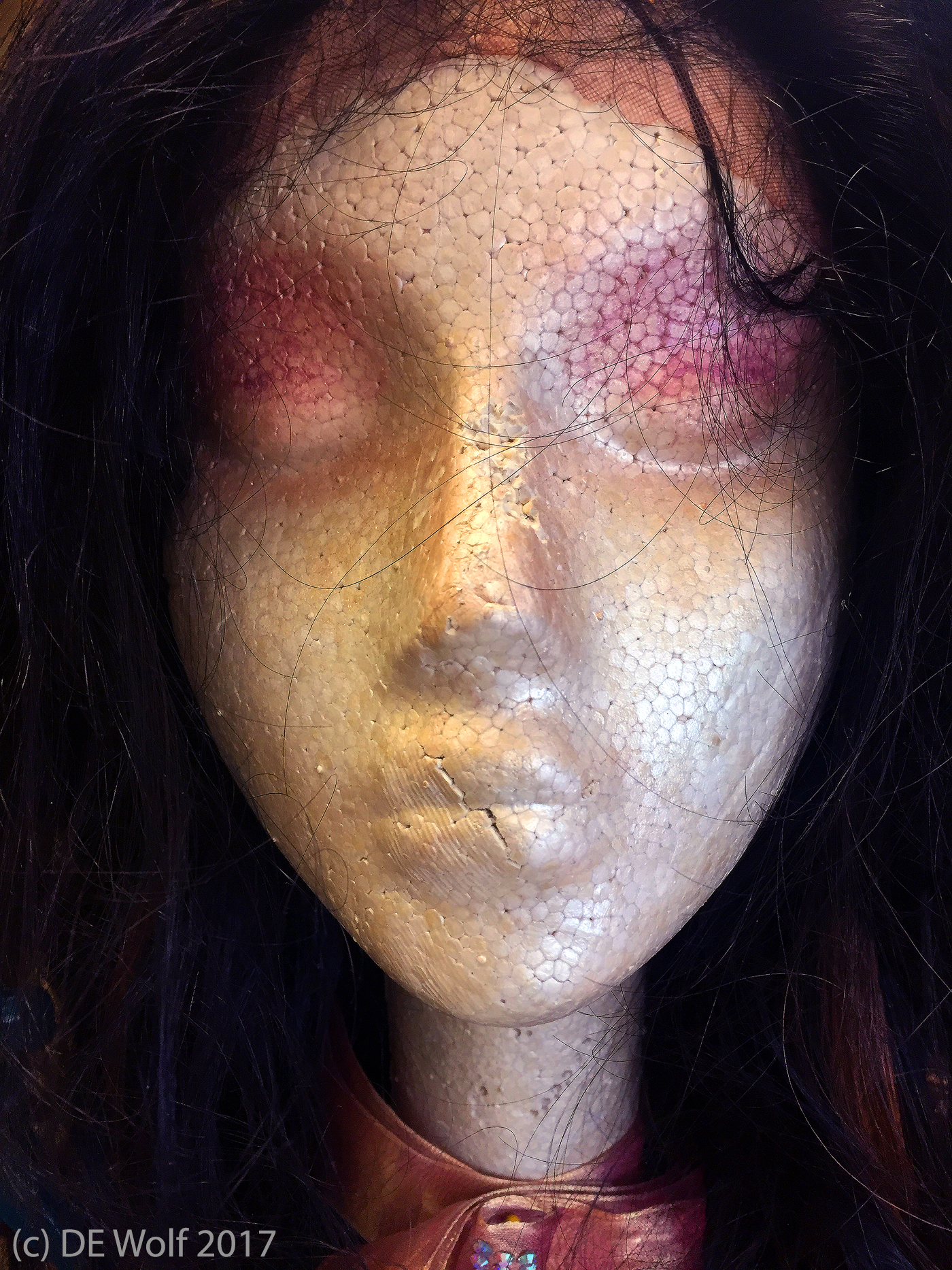I took my wife to her hairdresser this weekend and I was a bit stunned by the wig mannequin of Figure 1. She is very reminiscent of a Tim Burton character – utterly vampiric. Most striking is the violet eye shadow, her closed eyes, pale tessellated complexion, and cracked lips. You forget that she is a mannequin and find yourself taken up in the ambiguity of alive or dead. It will come as no surprise to regular readers of this blog that I made a poetic association with this pale ghost.
She immediately brought to my mind Robert Browning’s dark poem “Porphyria’s Lover.” I reproduce it in its entirety below, because I believe that it is essential reading for English speakers. Despite its macabre subject matter, or perhaps because of it, it is a milestone in the exploration of psychosis, of the darkest regions of the disturbed and murderous mind. It speaks of love, hate; life, death, and possession most ambiguously, and in those regards, it hearkens to another Browning masterpiece My Last Duchess.
The wonderful mystery of Porphyria’s Lover is that the meaning of the name is obscure. Robert Browning was home-schooled and as such he often made obscure personal associations with classicism. So, in the end, we really don’t know why it is called “Porphyria’s Lover.” Perhaps that is all part of the charm. “And yet God has not said a word!”


It appears this head has a patina on seasoned styrofoam. She should last for eons, probably longer than alabaster, if she does not fall apart.